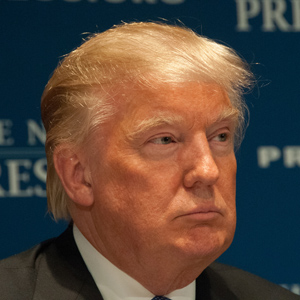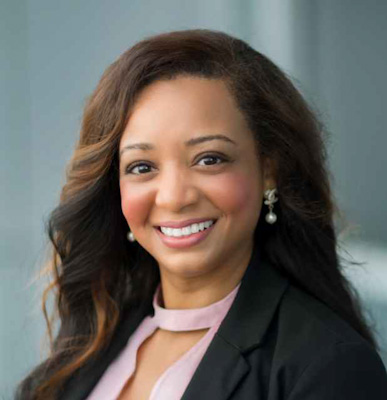How will Trump shape the Supreme Court?

Photo of President-elect Donald Trump from Albert H. Teich / Shutterstock.com
The surprise election of Donald J. Trump to the presidency caused tremors at the White House, in Congress and in world capitals. But the most lasting impact may be at the Supreme Court.
With Justice Antonin Scalia’s death last February, Democrats were the closest they’d come to a liberal majority on the high court in 50 years. But the gambit by Republican leaders in the Senate to refuse to give a hearing to Judge Merrick B. Garland, President Barack Obama’s nominee for the seat, paid off with Trump’s election.
“We would have had the most liberal court since the late 1960s” had Garland or another Democratic appointee been confirmed, says Roger Clegg, the president and general counsel of the Center for Equal Opportunity and a former Department of Justice official under Presidents Ronald Reagan and George H.W. Bush. “But we’re not going to have that now.”
Brianne Gorod, the chief counsel of the progressive Constitutional Accountability Center, says it was “certainly disappointing that a new progressive majority appears not to be coming in the near term.
“We’ll have a conservative court, but we’ll have a court where some progressive victories are still possible,” she says.
The nominees
Trump has vowed to select a nominee from two lists he put out during the campaign that totaled 21 possibilities. The combined list is made up of reliably conservative names, all but one of whom is a sitting federal or state court judge. (U.S. Sen. Mike Lee of Utah, the son of former U.S. Solicitor General Rex Lee and a former law clerk to Justice Samuel A. Alito Jr., is the only nonjudge, and he quickly disavowed interest.)
Kellyanne Conway, Trump’s campaign manager, said soon after the election that the president-elect was committed to choosing from the list of 21 for the Scalia vacancy. (Trump also vowed during the campaign to use the same names for other vacancies, but most political and legal analysts put less stock in that promise.)
John G. Malcolm, director of the Heritage Foundation’s Edwin Meese III Center for Legal and Judicial Studies, says that Trump’s political instincts led him to realize that many conservatives were skeptical of his commitment to their ideals.
“He put together a thoughtful and dynamic list that managed to assuage the concerns of a lot of conservatives,” says Malcolm, who saw six of the eight names he provided to Trump end up on the list of potential nominees.
Besides Lee, Malcolm’s suggested names that made the list were William H. Pryor Jr. of the 11th U.S. Circuit Court of Appeals at Atlanta; Diane S. Sykes of the 7th Circuit at Chicago; Steven M. Colloton and Raymond W. Gruender of the 8th Circuit at St. Louis; and Justice Don R. Willett of the Texas Supreme Court, that state’s highest court for civil matters.
The other names on Trump’s list were provided by the Federalist Society, the organization formed in 1982 as a conservative and libertarian answer to the perceived liberal orthodoxy of U.S. law schools.
Among those names are Raymond M. Kethledge of the 6th Circuit at Cincinnati; Thomas M. Hardiman of the 3rd Circuit at Philadelphia; Timothy M. Tymkovich of the 10th Circuit at Denver; Joan L. Larsen of the Michigan Supreme Court; and David R. Stras of the Minnesota Supreme Court.
Trump’s list, though dominated by federal appeals court judges, includes several state high court judges, as well as two federal district judges. While the current court is made up mostly of Harvard or Yale law graduates, Trump’s list has just one Yale law grad (Colloton). Nearly half of the candidates hail from the nation’s heartland.
Trump “really broadened the perspective by looking at state supreme court justices,” says Carrie Severino, the chief counsel and policy director of the Judicial Crisis Network, a conservative group in Washington, D.C. “That [position] gives you a much better view of their judicial philosophy because it is a court of last resort.”
A Showcase for Judges
Malcolm and Severino were among the attendees at an event that occurred just over a week after the election, and became the place to see and be seen for Supreme Court enthusiasts—the Federalist Society’s National Lawyers Convention.
The group’s meeting at a Washington hotel had been planned as a major tribute to the late Justice Scalia. That program went on as planned, and included speeches by Justices Alito and Clarence Thomas and panel discussions about Scalia’s jurisprudence.
In the large hallway outside the ballroom of the Mayflower Hotel, however, the mood was ebullient. Many society members acknowledge they had deep reservations about Trump as the Republican presidential nominee, but they seemed comfortable with the sudden change in fortune his election meant for the future of the Supreme Court and the rest of the federal judiciary.
As many as 20 of the high court candidates on Trump’s list were present for the convention, with nine of them serving as panel moderators, allowing them some generally noncontroversial exposure. For example, Pryor—considered by some analysts to be a leading contender—moderated a panel on federalism and the separation of powers, where he stressed that Scalia understood that “real constitutional law” was about the “governing structure” of the Constitution.
“It’s a mistake to think the Bill of Rights is the most important feature of American democracy,” Pryor said.
Meanwhile, on the same day the Federalist Society convention opened, two former U.S. solicitors general were a few blocks away, weighing in on the future of the Supreme Court.
Donald B. Verrilli Jr. served as President Obama’s solicitor general from 2011 until 2016. He told an audience of business executives and lawyers at a Bloomberg Next event that a presidential administration typically engages in “really intense vetting” of the top Supreme Court candidates.
“It’s possible, but optimistic” that a nominee would be chosen, confirmed and on the court by the time of its last argument session for this term in April, says Verrilli, who joined the law firm Munger, Tolles & Olson to open a new Washington office after leaving the solicitor general post.
Theodore B. Olson, a Gibson Dunn & Crutcher partner who served as President George W. Bush’s solicitor general from 2001 to 2004, told the same crowd that there could be a “somewhat prolonged process” to confirm Trump’s nominee in the Senate despite its Republican control.
“There is going to be a certain amount of payback from Democratic senators because of this 10-month delay since Justice Scalia passed away,” Olson says. “I would be very surprised if someone is in place before the end of the term.”
Verrilli says that despite the strong likelihood that Trump will nominate a conservative, that person “isn’t going to be a carbon copy of Justice Scalia. In some rough sense, the court is going to return to the equilibrium of the last five years.”
That’s a period that saw progressive victories on the Affordable Care Act, marriage equality and disparate-impact discrimination in housing, he notes, but also conservative victories in areas such as limiting the Voting Rights Act of 1965.
“That’s the world the court is returning to” with Trump’s pick, Verrilli says.
An Aging Court
Adam Winkler, a law professor at the University of California at Los Angeles, agrees that Scalia’s replacement isn’t likely to shift the court too far to the right, except for perhaps in some areas of criminal law where Scalia’s originalist approach led him to vote with the court’s liberal bloc in supporting the rights of criminal defendants.
“Of course, we don’t know when the next vacancy will arise,” says Winkler.
Supreme Court observers seem to have the birth dates of the justices etched in their memories. Justice Ruth Bader Ginsburg is 83. Justice Anthony M. Kennedy is 80. Justice Stephen G. Breyer is 78. A vacancy in any of their seats in the next four years would give Trump the chance to cement a conservative court for a generation or more.
“The odds are high that in the next four years, there will be one or more additional vacancies,” says Malcolm.
If that happens, whether or not Trump feels compelled to draw on his original list, groups such as Heritage and the Federalist Society will be more than happy to supply more names.
This article originally appeared in the January 2017 issue of the ABA Journal with this headline: “Trump’s Court: How will the next president shape the Supreme Court?”



